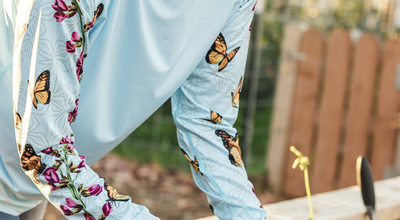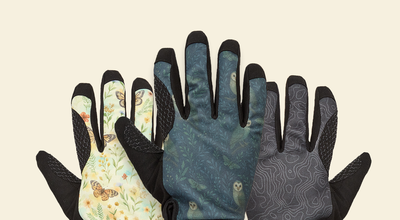Spring Gardening Checklist: Tips for Planning and Organizing Your Garden
Spring is the perfect time to start planning and organizing your garden for the upcoming growing season. With a little bit of preparation and some helpful tips, you can have a beautiful and productive garden that will flourish throughout the spring and summer months. Here's a spring gardening checklist to help you get started!

Assess Your Garden Space
Before you start planning your garden, take a good look at your outdoor space. Consider the size of your garden, the type of soil, and the amount of sunlight it receives. This will help you determine what plants will grow best in your garden.
- Is the soil healthy and fertile?
- Are there any drainage issues?
- Does the area receive enough sunlight for the plants you want to grow?
- Are there any pests or diseases that could harm your plants?
Once you've assessed your garden space, you can take steps to address any issues and prepare the soil for planting.

Decide what to plant
Once you've evaluated your garden space, it's time to decide what to plant. Consider what you'd like to grow, such as vegetables, flowers, or herbs. Make a list of the plants you'd like to grow and do some research to find out what plants are best suited for your garden.
Plan your garden layout
Once you've decided what to plant, it's time to plan your garden layout. Decide where you'll plant each type of plant, and make sure to consider the amount of sunlight each plant needs. Group plants together that have similar needs.
Prepare your soil
Good soil is the key to a healthy garden. Before planting, prepare your soil by removing weeds, rocks, and debris. Add compost or organic matter to your soil to improve its fertility and texture.

Plan Your Garden Layout
One of the keys to a successful garden is planning your garden layout in advance. Here are some tips for planning your garden:
- Decide which plants you want to grow and how much space they will need.
- Group plants together based on their water and sunlight needs.
- Consider using companion planting to maximize space and minimize pests.
- Make sure you have a plan for watering and fertilizing your plants.
By planning your garden layout in advance, you can make sure you have enough space for all of your plants and that they will receive the proper care and attention they need.
Transplant seedlings
Once your seedlings are ready, it's time to transplant them into your garden. Make sure to follow the instructions for each plant, and space your plants properly to allow room for growth.

Water and fertilize
Watering and fertilizing your plants is essential for their growth and health. Make sure to water your plants regularly, and fertilize them as needed. Use a fertilizer that is appropriate for each type of plant, and follow the instructions carefully.
Start Seeds Indoors
If you're planning on growing plants from seeds, now is the time to start them indoors. Here are some tips for starting seeds:
- Use a high-quality seed-starting mix.
- Plant the seeds at the proper depth.
- Keep the soil moist but not too wet.
- Provide adequate light and warmth for the seeds to germinate.
By starting your seeds indoors, you can get a head start on the growing season and have healthy, robust plants to transplant into your garden later on.
Clean and Organize Your Garden Tools
Before you start planting, it's important to clean and organize your garden tools. Here are some tips for maintaining your garden tools:
- Clean dirt and debris off of your tools after each use.
- Sharpen blades as needed.
- Oil moving parts to prevent rust.
- Store tools in a dry, protected area.
By taking care of your garden tools, you can ensure they last for many growing seasons to come.

Common Questions and Problems
Here are some common questions and problems that gardeners face during the spring season, along with some helpful tips and solutions:
Q: What should I do if my soil is too acidic?
A: You can amend your soil by adding lime or wood ash to raise the pH level. Be sure to follow the instructions on the package and test your soil pH level regularly.
Q: How do I prevent pests and diseases in my garden?
A: There are several ways to prevent pests and diseases in your garden, including using companion planting, practicing good sanitation, and using organic
By following this spring gardening checklist, you’ll be well on your way to planning and organizing a healthy, productive, and beautiful garden. Remember to take the time to assess your garden, plan your garden, prepare the soil, start planting, and maintain your garden throughout the growing season.












